Award-Winning Learning Design: RMIT University Vietnam's Photography 101 Success Story
Client: RMIT University Vietnam

RMIT University Vietnam has locations in Ho Chi Minh City, Hanoi, and Danang and serves approximately 13,000 students across all campuses. As an extension of RMIT University in Australia, the Vietnam campuses are committed to delivering high-quality, globally recognized education while adapting to the region's unique cultural and educational needs.
Among the driving forces behind this commitment is Sasha Stubbs, Manager of Learning Design at RMIT University Vietnam. Alongside her, Uyen Nguyen, Senior Learning Designer, and Christian Berg, Academic and Course Coordinator, have played pivotal roles in shaping the university's approach to student engagement and course transformation. Their expertise in learning design has been instrumental in reimagining courses like Photography 101 to better serve a diverse and interdisciplinary student body.
The Challenge of Teaching Creativity in a Diverse Classroom
Teaching a creative discipline like photography to a diverse and interdisciplinary student body is no small feat. At RMIT University Vietnam, Photography 101 faced significant challenges. Serving nearly 600 students annually, this elective course included students from across all schools.
The diversity among students resulted in a wide range of skill levels, which sometimes made it challenging to address everyone's needs effectively. Additionally, many Vietnamese students displayed a hesitance to share their work or offer critiques, likely due to cultural norms around respect and concerns about being judged. These factors created some obstacles to peer learning and placed significant responsibility on instructors to offer personalized feedback.
These dynamics often lead to uneven student engagement and inconsistent learning outcomes in traditional classroom settings. Thus, it became clear that the course design needed to be radically rethought.
"Blended learning is still quite new for both our teaching staff and students. The Vietnamese education system here has historically emphasized teacher-centered instruction. We're gradually transitioning toward more active asynchronous learning approaches," shared Sasha.
The Solution:
A Groundbreaking Shift to Asynchronous Learning
Recognizing these challenges, RMIT University Vietnam embarked on an ambitious redesign of the elective course Photography 101. Collaborating closely with its Learning Design team and leveraging Atomic Jolt's social learning tools, the university reimagined the course as a fully asynchronous experience.
Key elements of the redesign included:
- High-Quality Video Content: Immersive videos showcasing professional photographers at work provided students with real-world insights and inspiration unavailable in traditional classrooms.
- Interactive Peer Critiques: Innovative tools fostered a culture of collaboration, breaking down cultural barriers and encouraging students to share and engage.
- Flexible Learning Experiences: The asynchronous model allowed students to learn at their own pace while maintaining high engagement levels.
- Seamless Social Learning Integration: Atomic Polls and Atomic Discussions transformed the course into an interactive and reflective learning experience, seamlessly weaving content with opportunities for students to share ideas, give and receive feedback, check their understanding, and reflect on their learning.
The centerpiece of the new course was its reliance on high-quality multimedia resources, particularly professional-grade video content. These videos allowed students to observe professional photographers in action, gaining insights into equipment handling, creative techniques, and real-world decision-making processes — experiences that are challenging to replicate in a traditional classroom.
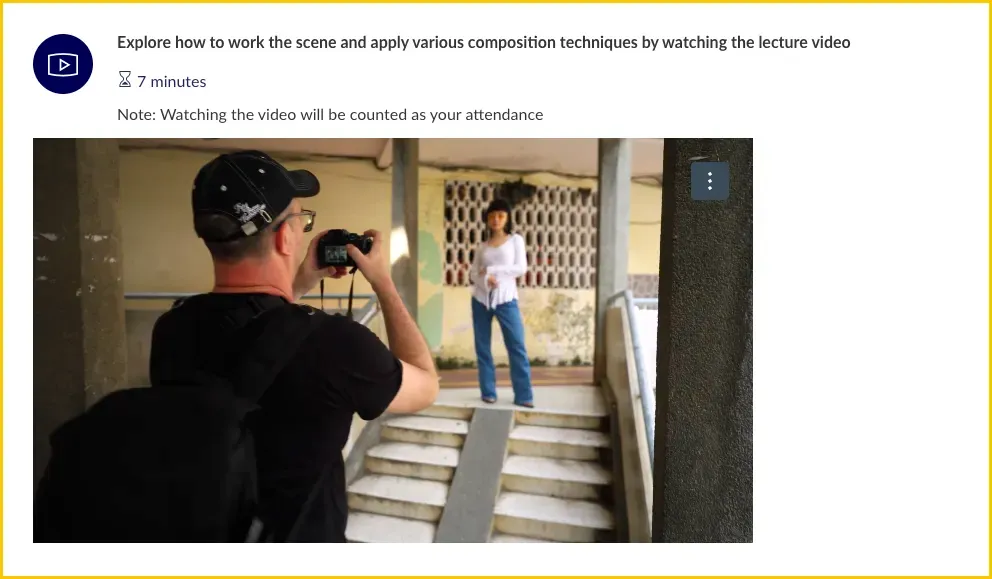
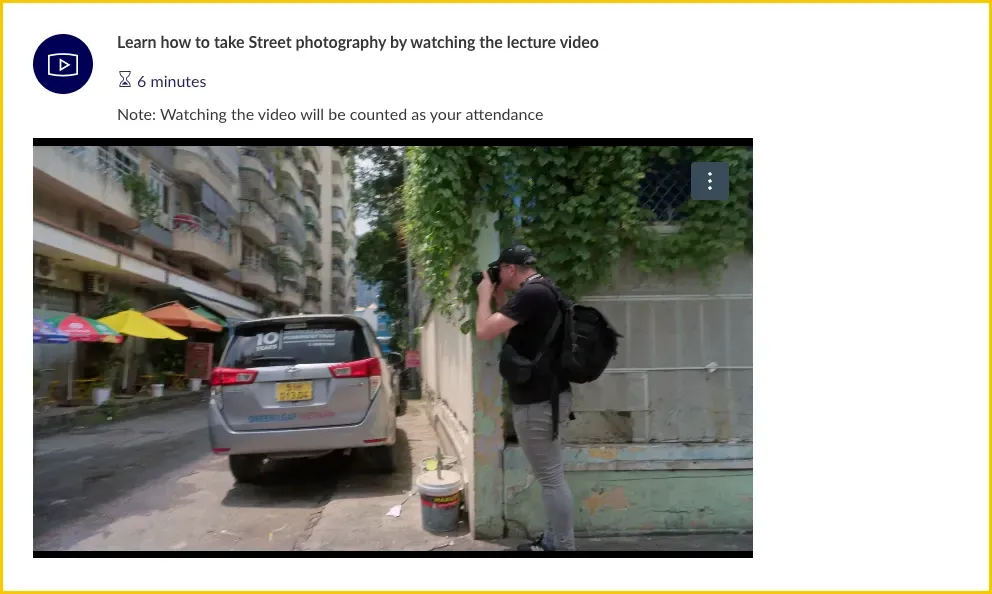
Additionally, the course integrated Atomic Polls and Atomic Discussions to foster social learning and collaboration. A key point to keep in mind is that Photography 101 is an elective course, meaning students from all disciplines — and skill levels — are enrolled. Having social learning tools in place allows instructors to gauge students' skill levels in a class like this, where there is variety in background knowledge.
"Tools such as Atomic Discussions and Polls are really the backbone that make an asynchronous course like Photo 101 possible in the first place. For us academics, these tools allow a very quick glimpse into students' understanding and possible issues that need to be addressed. This works even better than in the traditional classroom as, in my experience, Vietnamese students are often shy and hesitant to ask questions directly in front of their peers."
Atomic Polls:
- Enabled real-time feedback with features like anonymous responses, helping students share thoughts without fear of judgment.
- Facilitated low-stakes assessments to check understanding, with automatic feedback and links to relevant tutorials.
- Used Likert-scale questions to measure career skills and psychological behaviors, yielding high response rates.
"I really wanted to bring that low-stakes social learning in, so Atomic Polls is so great in so many ways; we start a learning sequence by activating schema through a fun poll," said Sasha. "We can also check understanding through a poll, or people can share an opinion or reflect on their own experience."
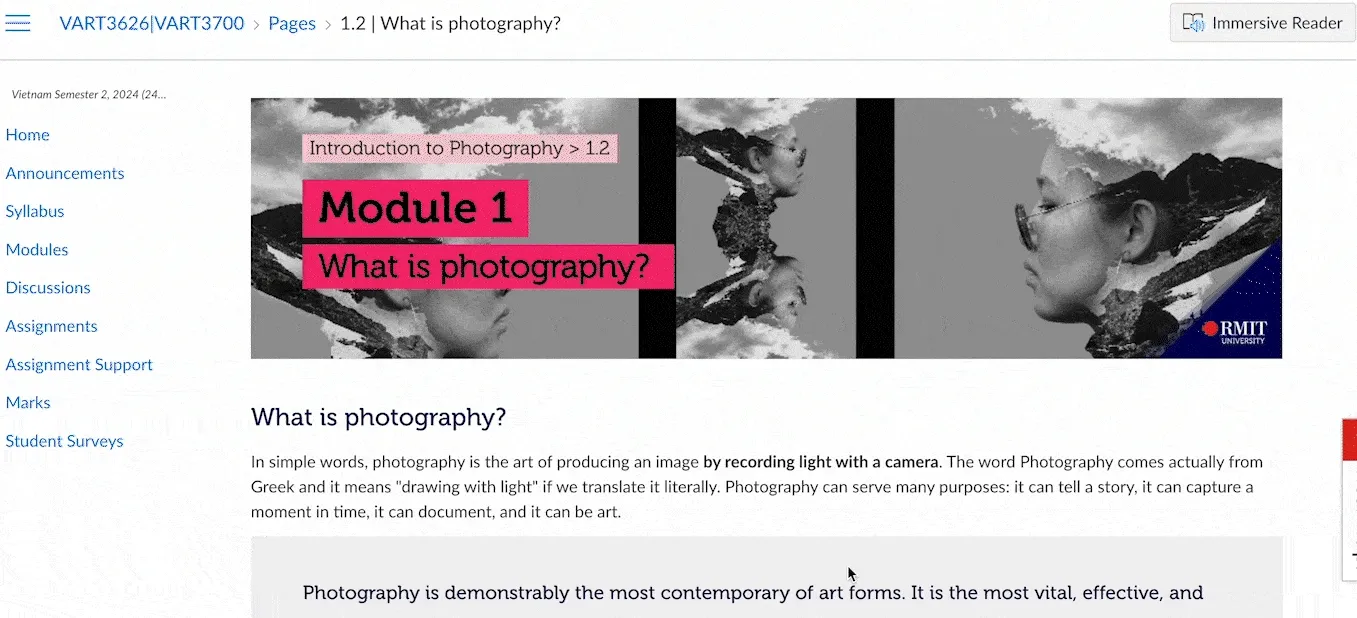
Atomic Discussions:
- Provided a less formal alternative to standard LMS discussion boards, with features like anonymous posting and in-page discussions.
- Encouraged students to engage consistently through threaded conversations with notifications.
- Supported rich media integration and section filtering, fostering more inclusive and meaningful dialogue.
"Discussions are good, but I often find discussion tools in learning management systems are far too formal and daunting," commented Sasha. "Part of our design approach is that it's a weaving of content and interactivity so that every significant bit of content is an opportunity to share or test their understanding."

"It looks so natural in Canvas. It doesn't stand out — it's seamless on the page. So students feel very natural when doing Polls or Discussions," said Uyen. "And even though these activities might be checking comprehension, they feel very low stakes, so students feel encouraged to participate."
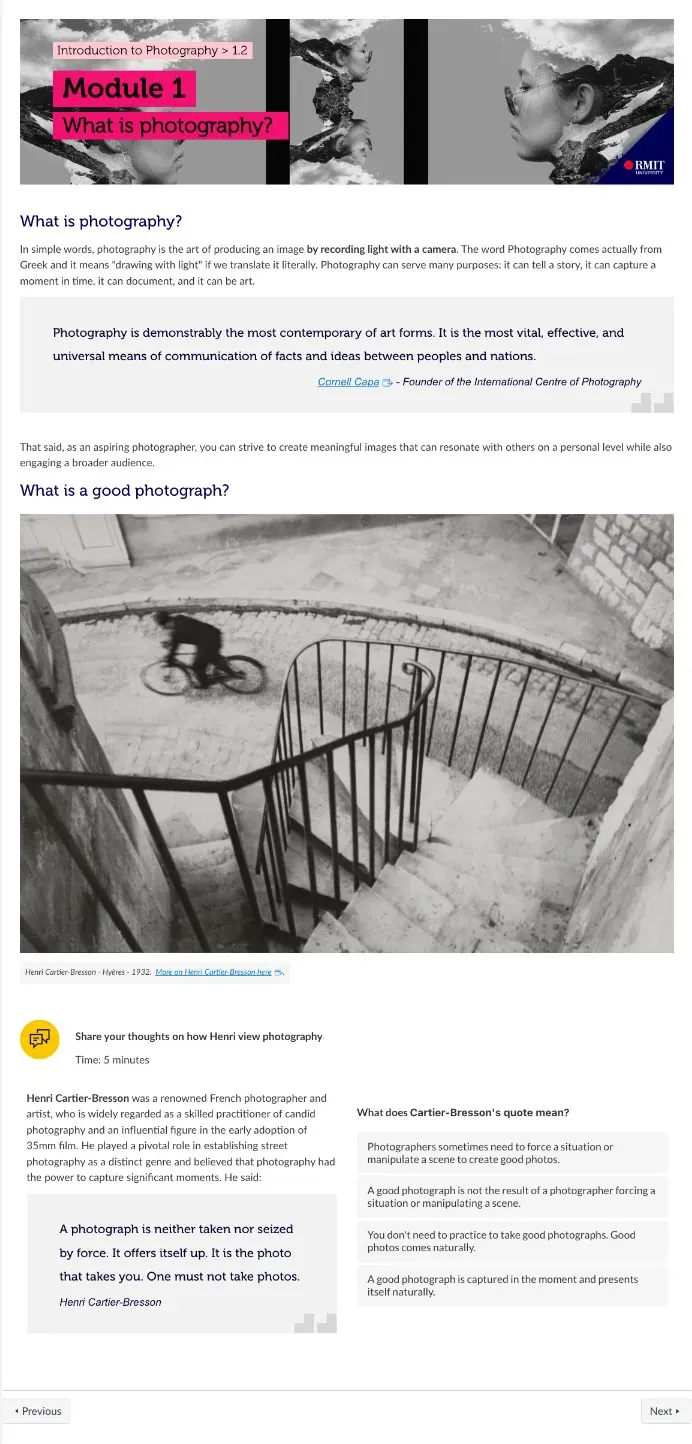
A New Era of Engagement and Inclusion
The transition to an asynchronous model fundamentally transformed the student experience. Freed from the constraints of scheduled class times, students could engage with course materials at their own pace, revisiting content as needed. This flexibility was especially valuable for students balancing coursework with other commitments.
Using anonymous discussions and polls lowered barriers to participation, fostering a safe space for students to share their work and receive feedback. Peer critiques, once rare, became a cornerstone of the learning process, creating a collaborative community that enhanced both engagement and learning outcomes.
"These tools allow us to make a really interactive, engaging,
meaningful, social learning experience, especially when you're learning
asynchronously. We want to create that community of learners, and that's
why the social part is really important."
- Sasha Stubbs, Manager, Learning Design
Recognition for Excellence
Photography 101's innovative design did not go unnoticed. The course earned three Platinum LearnX Awards, a prestigious recognition of excellence in educational design and delivery.
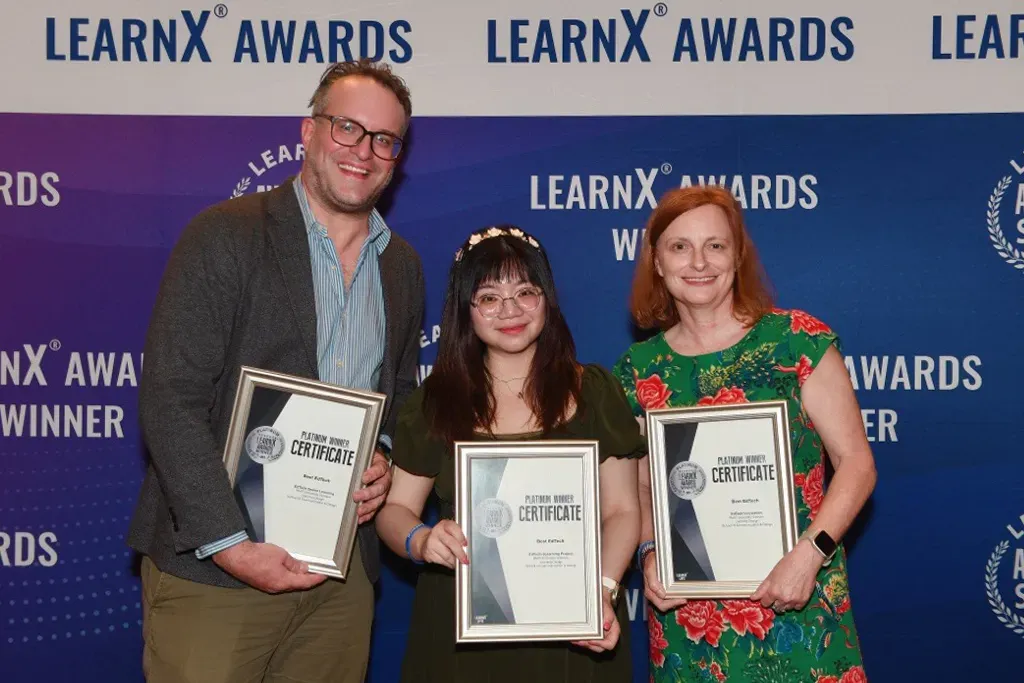

The course was also showcased at leading conferences, including the 2023 ASCILITE Conference in New Zealand and the Digitally Engaged Learning Conference in Singapore, where it served as a model of how asynchronous learning can succeed in creative disciplines. Furthermore, RMIT University Vietnam secured a 2023 Adobe X Creative Curriculum Grant, enabling further investment in cutting-edge teaching tools and resources.
Expanding the Vision with Atomic Jolt
Photography 101 is not the only course at RMIT University Vietnam that has benefited from Atomic Jolt's innovative tools. Across the university, Atomic Polls and Discussions have become integral to a broader strategy for engaging students in blended and asynchronous learning environments. For example, more than half actively participated in discussions in a Business in Society course with over 1,300 students — a notable achievement given the scale.

Building on these successes, RMIT has ambitious plans for the future:
- Analytics Dashboards: Consolidating data from Atomic Jolt tools to provide actionable insights into student engagement.
- Enhanced Features: RMIT is partnering with Atomic Jolt to enhance Atomic Discussions with richer media support, advanced filtering, and enhanced notification options.
- Community Building: Establishing a network of learning design practitioners across institutions to share best practices and drive innovation.
The Broader Implications for Education
The success of RMIT University Vietnam's Photography 101 demonstrates the transformative potential of asynchronous learning when paired with thoughtful design and the right tools. By addressing cultural and logistical barriers, the course has created an inclusive, engaging, and effective learning environment that caters to a diverse student population.
"Tools such as Atomic Discussions and Polls are really the backbone that make an asynchronous course like Photo 101 possible in the first place," said Christian. "For us academics, these tools allow a very quick glimpse into students' understanding and possible issues that need to be addressed. This works even better than in the traditional classroom as, in my experience, Vietnamese students are often shy and hesitant to ask questions directly in front of their peers."
This case study is more than a celebration of one course — it is a blueprint for how institutions worldwide can harness technology to enhance creative education.
As RMIT University Vietnam continues to expand its use of Atomic Jolt tools, the university is poised to lead the way in redefining student engagement and learning outcomes in the digital age.
New to Atomic Jolt's suite of Social Learning tools? Schedule a demo to learn more!